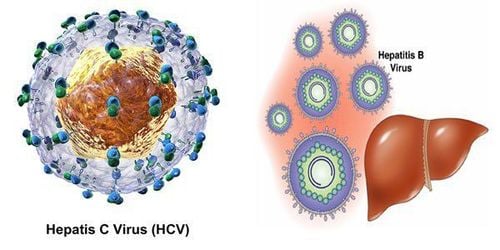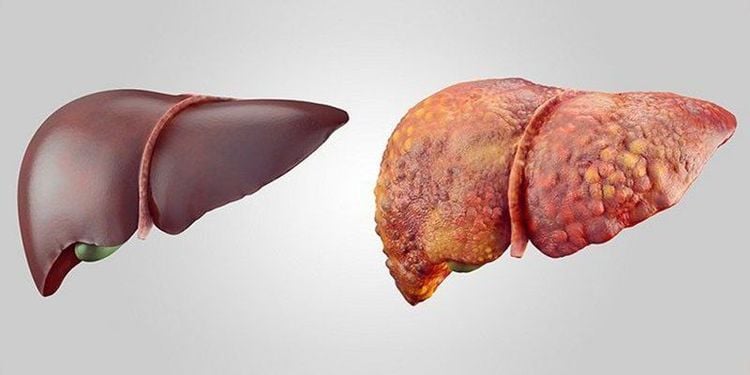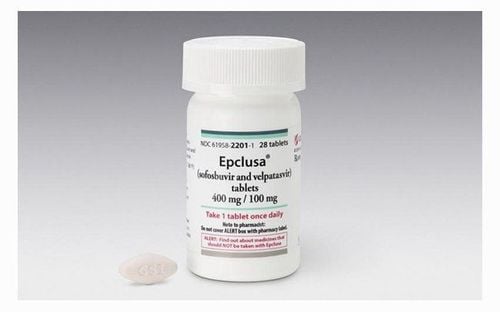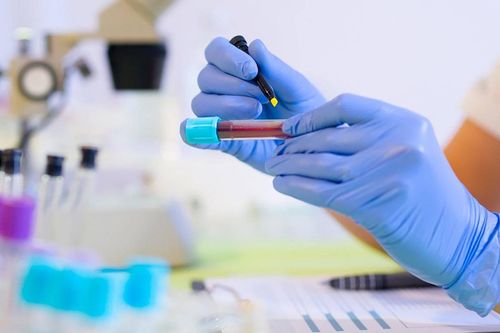This is an automatically translated article.
Fatty liver is a common histologic finding in patients with hepatitis C infection. Since HCV is known to hijack lipid metabolism pathways for virion maturation and secretion, several mechanisms may be involved. HCV-related hepatic steatosis has been suggested.
1. How does the HCV virus affect the liver?
HCV induces adipogenesis by increasing liver fat through sterol regulatory factor binding protein 1c, which is a protein that overexpresses LDL receptors, thereby facilitating acid uptake by hepatocytes fat, leading to a higher fat content in the liver. In contrast, HCV inhibits lipolysis by disrupting mito-chondrial β-chondrial oxidation, either directly by the virus itself or indirectly through the upregulation of the enzyme carnitine palmitoyltransferase-1, which regulates fatty acid oxidation. These two mechanisms are further fueled by HCV-induced insulin resistance.
Furthermore, the HCV core protein blocks the action of the microsomal triacylglycerol transfer protein, which is used for VLDL assembly and secretion, leading to increased cytoplasmic lipid droplets and thus steatosis. Miyoshi et al, who investigated the role of the HCV core protein in the development of steatosis in HCV genotype 2, revealed that the core protein activates the enzyme δ-9 desaturase, an enzyme that metabolizes fatty acids, and thus leads to accumulation of triglycerides. This dyslipidemia is also associated with mitochondrial dysfunction.

Virus HCV là nguyên nhân gay nên bệnh gan nhiễm mỡ
2. Fatty liver and HCV genotypes
Fatty liver is commonly reported in patients with HCV genotype 1 and genotype 3. Its occurrence in the latter genotype is mainly related to the previously mentioned mechanisms. Thus, hemolysis observed after successful viral eradication suggests a direct lipogenic pathway for HCV genotype 3. This hypothesis was supported in a study of patients treated with HCV. interferon-based regimens, in which 91% of genotype 3 patients and only 43% of other genotypes improved their lipid profile after viral cure. Kumar et al., also observed similar findings when steatosis was profoundly reduced in genotype 3 patients after SVR, while no change regardless of response occurred in patients with SVR. genotype 1. Although the development of fatty liver is associated with viral features of genotype 3 (viral steatosis), status in genotype 1 corresponds to metabolic features such as glucose and insulin resistance (metabolic steatosis). This observation suggests that in patients with genotype 1, factors other than viral features play an essential role in the development of hepatic steatosis.
3.Prevalence of steatosis and cirrhosis in patients with hepatitis C infection after SVR
After SVR is achieved with antiretroviral therapy, reversible hyperlipidemia is the most commonly reported outcome, which has been seen in several studies. However, recent reviews show conflicting findings. In a prospective study examining the prevalence of steatosis and cirrhosis in patients with hepatitis C infection after SVR, the prevalence of steatosis was found to be 47.5%, close to the pre-treatment figure. treatment (50%). In addition, the overall mean fibrosis score was reduced after viral clearance. However, patients with steatosis maintained clinically significant fibrosis scores, compared with patients without fatty liver. In another study involving 49 patients to evaluate the effects of DAAs on glucose and lipid homeostasis, controlled impairment parameter values were markedly increased at the end of follow-up compared with initial. Importantly, this finding was independent of weight gain, as no change in body mass index (BMI) was observed over time. Patients with hepatitis C infection and viral steatosis have been shown to have worse liver outcomes in pre-treatment conditions.

Tỷ lệ nhiễm mỡ và xơ gan ở bệnh nhân nhiễm viêm gan C sau đáp ứng virus kéo dài
4. Impact of steatosis on HCC and all-cause mortality in patients with hepatitis C infection after SVR
A recent study describes that the presence of steatosis after SVR does not carry a better risk. In this study, to evaluate the impact of steatosis on HCC and all-cause mortality in hepatitis C-infected patients after SVR, the presence of fatty liver was associated with an significantly increased by 7.5 times in both main criteria. Furthermore, there was also a significantly higher risk of extrahepatic manifestations, particularly the risk of cardiovascular disease, after amelioration of steatosis following sustained virological response. These findings combined highlight the importance of hepatic steatosis as a major risk factor for adverse outcomes and warrant special consideration for screening and monitoring in this population.
Please dial HOTLINE for more information or register for an appointment HERE. Download MyVinmec app to make appointments faster and to manage your bookings easily.













